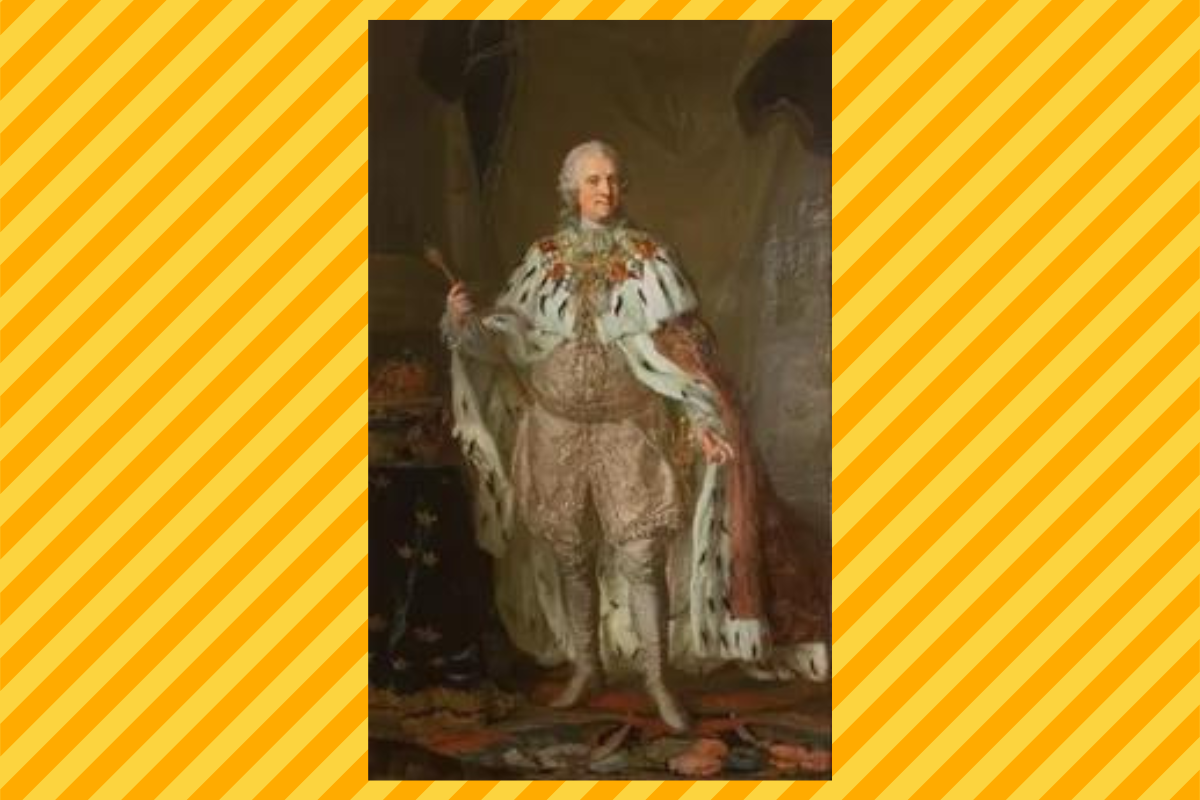Historical records confirm that in 1771, Frederick died of a stroke after eating dinner on Shrove Tuesday, or “fettisdagen,” a celebration that involves a wide array of food ahead of fasting during the Christian holiday, Lent. It is widely accepted that semla, a traditional Scandinavian dessert, was likely served as part of the meal.
Cinnamon buns as we know them today were not likely offered as a dessert.
Aside from anecdotal accounts, a Swedish historian concluded there was no evidence in the royal archives to corroborate tales that the king, who was considered in poor health generally at the time of his death, died as a direct result of consuming too many semlas.
For centuries, former Swedish King Adolf Frederick's unfortunate end had been the source of historical folklore mixed with a tad hint of ironic humor. Frederick, whose name is also spelled Fredrick, was rumored to have died in 1771 after eating as many as 14 cinnamon buns.
As with any dark yet entertaining tale from history, the claim made its way into social media circles when, in August 2023, the story of Frederick's gluttonous end resurfaced in a post on X (formerly Twitter):
So the limit is 13 ... ???
Has anyone else tested this? pic.twitter.com/IFF8uQV0S7
— Wall Street Silver (@WallStreetSilv) August 24, 2023
Through a Google search, Snopes found examples of the claim that the king "ate himself to death" on several websites, including All That's Interesting, History Collection, and Ancient Origins. Similar iterations of the claim also appeared in other social media posts, including 2014 Reddit post below:
TIL Adolf Frederick, former King of Sweden, died after eating a meal consisting of lobster, caviar, sauerkraut, kippers and champagne, which was topped off with 14 servings of semla served in a bowl of hot milk. He is remembered as "the king who ate himself to death."
byu/keithmac20 intodayilearned
Snopes consulted two independent Swedish historians who confirmed that historical records confirmed that in 1771, Fredrick died of a stroke following dinner on Shrove Tuesday, or "'fettisdagen," a Christian holiday that is traditionally celebrated with decadent meals ahead of fasting for Lent.
As semla – not cinnamon buns – are a traditional Scandinavian dessert commonly served during the festivities, it is widely accepted that Frederick likely ate the cardamom-coated pastry at the end of dinner.
However, aside from anecdotal evidence, Snopes found no evidence to corroborate the fable that the king, who was considered in poor health generally, died as a direct result of eating dessert.
Snopes spoke with Swedish author and historian Henrik Berggren, who said in an email that though Frederick's demise is a popular story, its historical veracity and "hard facts are, well, hard to come by."
"It's a very popular story in Sweden, not because anyone is particularly interested in Adolf Frederick but because he supposedly died from consuming fourteen semla, which is not a cinnamon bun but a sort of pastry with cream, a marzipan-like paste and sweet bread," Berggren told Snopes.
Similarities between semla and cinnamon buns are obvious, yet the two dishes are not quite the same
 (Susanne Walström/imagebank.sweden.se)
(Susanne Walström/imagebank.sweden.se)
(Photo: Susanne Walström/imagebank.sweden.se)
Traditionally, semla are eaten on Shrove Tuesday, which marks the day before 40-days of fasting begin as part of the Christian holiday, Lent. Typically beginning between February and March, depending on the date of Easter, the holiday's date would align with that of Frederick's death.
"It's a pastry that traditionally was eaten before Lent, so the idea was to gorge yourself before the long fast. Semla are still immensely popular [in Sweden], which is why the story is retold every year when the fasting season begins -- though of course, nobody fasts anymore, they just [eat] their semla," said Berggren.
Born in 1710, Frederick served as king from 1751 until he died from a stroke in 1771 "supposedly after eating one bun too many," according to Sweden's The Royal Palaces.
But such accounts have not been corroborated by historical records.
At Snopes' request, archive librarian Arvid Jakobsson reviewed the Bernadotte Archive in Sweden, which hosts the private records of the Swedish royal family. Jakobsson confirmed that Frederick died of a stroke on the evening of Feb. 12, 1771 -- just a few hours after dinner. But the origins of the semla-induced death claim are less clear, and more "doubtful."
"For one, Count Johan Gabriel Oxenstierna mentioned the bun (not a cinnamon bun, but a typical Scandinavian dessert, called "semla", "fastlagsbulle" or "hetvägg" in Swedish), and wrote about it in his diary when he was stationed in Vienna at the time, so it was not an eyewitness account," Jakobsson told Snopes.
Oxenstierna, who was a Swedish diplomat and poet, also wrote that a semlor, the person who made the semla, should be "sent into exile" since they had "murdered the king".
"But again, Oxenstierna wasn't present [at the dinner] and wrote his diary entry a month after the event," said Jakobsson, adding:
That the king ate 14 semla at the same time is not mentioned until much later and it is not known who started that part of the myth. The accounts in the Palace Archives for the time are missing, so it is not 100% certain that [Frederick] even ate semla at all on the last day, although it is likely, since it was 'fettisdagen' when that dessert is popularly eaten in Sweden. The fact that he died on that particular day could be the reason that [a] semlor had been seen as the prime suspect.
The first official bulletins that announced Fredrick's death did not mention the dessert at all. Jakobsson sent Snopes the below postscript to the autopsy report, which stated that:
His Majesty died about three hours after his dinner, which consisted of strong and rich food.
"The king did however enjoy food and drink all his life and he did have stomach problems. Ha had never been physically strong and in 1771 he was 60 years old and in bad shape generally, suffering from what could be termed welfare diseases. So, in a way he did eat himself to death but it was a longer process," said Jakobsson.

